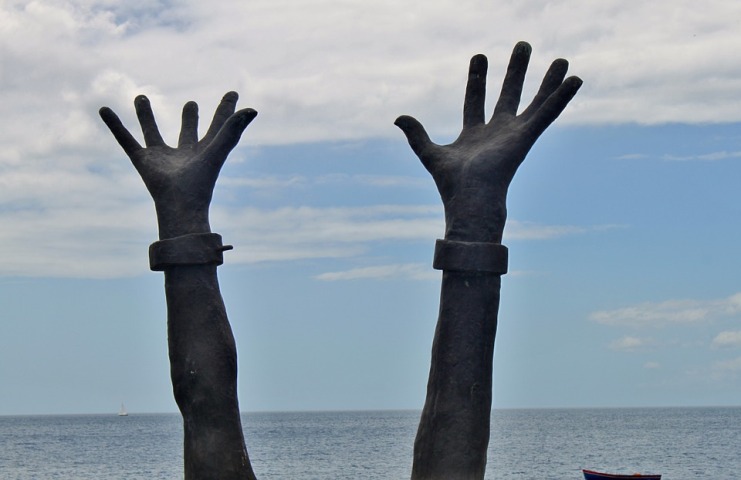Use AI, satellite imagery to beat human traffickers: Experts to slavery activists

Groups fighting slavery must make better use of technologies such as satellite imagery and artificial intelligence to beat tech-savvy human traffickers, a data expert said on Thursday.
New technologies including complex cryptocurrencies and mobile apps are fuelling the modern-day slave trade by enabling traffickers to ensnare more victims, expand their illicit empires and outfox law enforcement, experts say.
But digital tools can be turned against traffickers, said Andrew Zolli, head of social initiatives at Planet Labs, space and AI company in the United States.
"Every tool is a weapon if you hold it right," he said, quoting American singer Ani DiFranco, as he addressed the Thomson Reuters Foundation's annual Trust Conference in London.
"If we do not get you ready now ... inequality is going to grow," he added.
The United Nations has set a goal of 2030 for ending forced labour and modern slavery worldwide, estimated to be a $150 billion-a-year global business, with more than 40 million people estimated to be enslaved around the world.
Zolli, whose company has more than 100 satellites orbiting the planet, called for the creation of a modern slavery observatory where AI is used to analyse satellite images, find and predict the locations of slavery hotspots.
On Wednesday, Doreen Boyd, a professor at the University of Nottingham's Rights Lab, the world's first large-scale research platform on slavery, told the conference about a third of all slavery worldwide could be detected from space.
"We cannot see the slaves undertaking the work that they have to do ... but we can detect structures, infrastructure, activity and contextual information that surrounds where slavery may well be happening," she told the conference.
Partnering with Planet Labs, the Rights Lab's Slavery from Space project was able to identify about 55,000 brick kilns - sites infamous for using slaves - across South Asia, she said.
Non-government organisations could then use the information to better allocate resources, she added.
The project is one of a growing number piloting the use of modern technology to tackle trafficking.
Blockchain's digital ledger technology, for example, is being tested to protect workers and track supply chains.
Last month, computer giant IBM, financial services company Western Union and European police launched a project to share financial data in a bid to predict human trafficking.
(With inputs from agencies.)
- READ MORE ON:
- Western Union
- Reuters
- Thomson Reuters
- Thomson Reuters Corporation
- University
- University of the Witwatersrand
- Columbia University
- Blockchain
- Non-governmental organization
- United States Department of State
- United States Secretary of State
- State
- Thomson Reuters Foundation
- South Asia
- Asia
- East Asia
- Planet Labs
- World News
- Reuters News
ALSO READ
GLOBAL MARKETS-Asian stocks subdued on yen caution, US inflation in focus
India, Kazakhstan assess security challenges, exchange views on cross-border terrorism in South Asia
GLOBAL MARKETS-Asian stocks firm, take China Fitch downgrade in their stride
GLOBAL MARKETS-Asian stocks firm, take Fitch's China downgrade in their stride
Singapore's NUS-NTU top in Asian university rankings in 2024, says Quacquarelli Symonds










